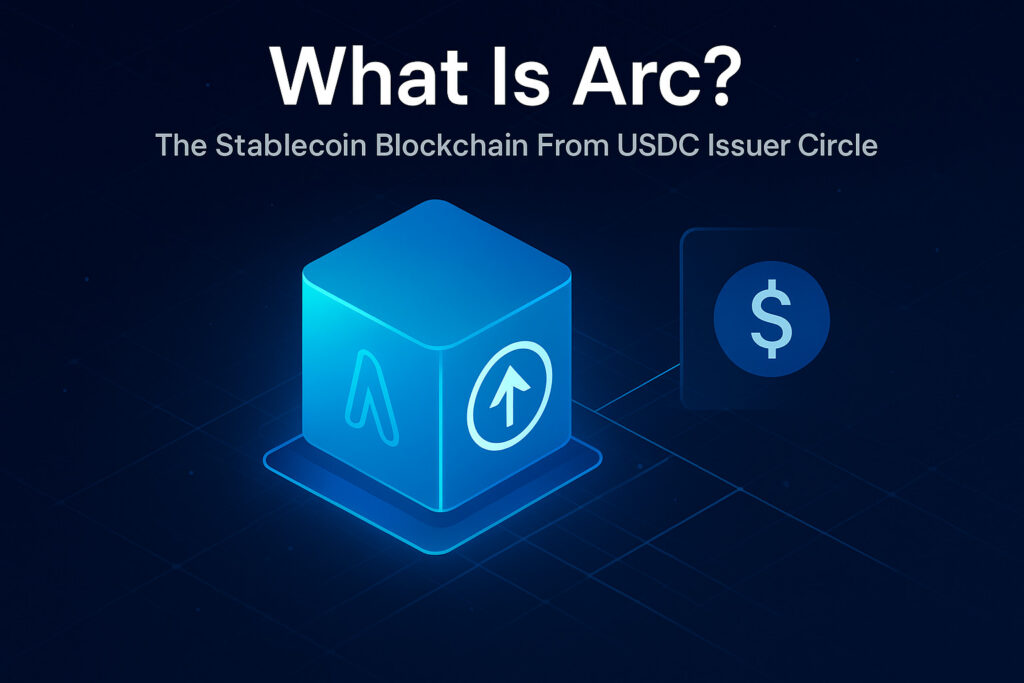Arc is a newly introduced Layer-1 blockchain developed by Circle, the company behind the popular USDC stablecoin. Unlike multipurpose networks such as Ethereum or Solana, Arc is purpose-built for stablecoin-native finance, offering a secure and efficient environment for transactions where price stability is essential.
Why Arc Is Different
Stablecoins have become the backbone of digital finance, enabling cross-border payments, remittances, and decentralized trading with minimal volatility. However, most stablecoins today operate on blockchains that were never designed with them as the core focus. Arc changes this dynamic by embedding stablecoin functionality directly at the protocol level, ensuring high performance and low transaction costs while maintaining strong compliance with financial regulations.

Key Features That Set Arc Apart
- Native Stablecoin Integration – USDC and other approved stablecoins are built into Arc’s architecture, reducing reliance on external smart contracts and lowering operational risk.
- Regulatory Alignment – Circle’s reputation for transparency and adherence to global standards positions Arc as a blockchain that banks, fintechs, and institutional investors can confidently explore.
- High Scalability and Low Fees – The network uses an advanced consensus mechanism to process large transaction volumes with minimal cost, making it ideal for payments, lending, and tokenized assets.
- Developer-Friendly Ecosystem – Arc supports DeFi protocols, on-chain remittance solutions, and new financial products, allowing builders to create applications that leverage stable value from day one.
Market Impact
The launch of Arc represents a significant step toward the mainstream adoption of stablecoins. By creating a dedicated blockchain focused on compliance, speed, and security, Circle is positioning Arc as a critical piece of the next generation of payment infrastructure. Analysts expect Arc to attract both retail and institutional users seeking a trusted platform for digital dollars, potentially rivaling traditional settlement networks and competing with established Layer-1 chains.
If Arc gains traction, it could transform how businesses move money across borders, power low-cost remittance corridors, and become a backbone for tokenized assets in regulated markets. For investors and developers, this presents a rare opportunity to engage with a network designed from the ground up for the future of digital finance.
